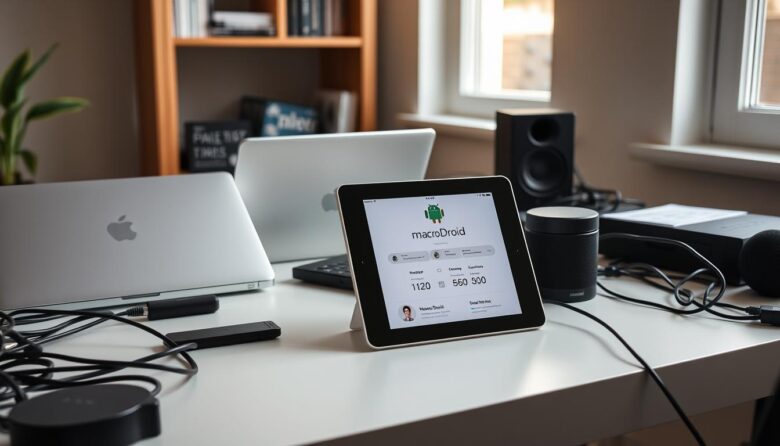Modern smartphones handle countless daily tasks, but managing them efficiently remains a challenge. Powerful automation platforms simplify this process by letting users design custom routines. These systems use triggers, actions, and constraints to execute tasks seamlessly—like adjusting settings or sending notifications based on specific conditions.
Emerging technologies are reshaping how these tools operate. While current solutions prioritize reliability, experimental features now explore intelligent recommendations for optimizing workflows. Localized development projects focus on privacy-first approaches, ensuring sensitive data stays secure during task execution.
Security remains critical when granting access to device functions. Developers increasingly emphasize offline processing to minimize risks associated with cloud dependencies. This balance between innovation and protection will define the next phase of smart task management.
Looking ahead, combining proven systems with adaptive enhancements promises more intuitive experiences. Users can build foundational skills today while preparing for advancements that streamline routine creation. Understanding core principles ensures seamless adoption of future upgrades designed to simplify digital life.
Introducing MacroDroid AI automation
At the heart of every smart routine lies a combination of detection, response, and logic. These three pillars form dynamic systems that adapt to user behavior while maintaining precise control over mobile operations. By mastering these interconnected elements, individuals can transform basic functions into personalized productivity tools.
Understanding Core Components
Triggers act as digital sensors, detecting events like incoming messages or location changes. When activated, they initiate predefined responses ranging from adjusting screen brightness to launching apps. Conditional safeguards prevent unnecessary activations, such as silencing phones only during meetings marked on calendars.
Building Intelligent Sequences
Multi-step processes combine several responses into single commands. For example, arriving home could activate Wi-Fi, disable mobile data, and play music simultaneously. Users layer restrictions to ensure actions occur under specific circumstances, like limiting notifications after bedtime.
Advanced configurations enable cascading operations where one completed task initiates another. This creates self-sustaining workflows that handle complex scenarios without manual input. Regular updates refine these processes based on usage patterns and feedback.
Configuring Your Device and Macro Setup
Customizing digital workflows starts with proper system configuration. Before diving into advanced features, users must establish foundational settings that enable seamless interactions between apps and hardware.
Installing Essential Tools
Begin by downloading the required software from official app stores. The initial setup process guides users through permission requests critical for functionality. Granting notification access ensures the tool can respond to alerts from other applications.
Adjusting System Permissions
Modern mobile platforms require explicit approval for background operations. Navigate to security settings to enable features like contact integration or location-based triggers. These authorizations allow personalized responses without compromising privacy.
Creating Initial Workflows
Start simple by designing routines that activate at specific times or events. Choose triggers like message notifications, then pair them with actions such as screen adjustments. Test each sequence thoroughly before relying on it for daily use.
Advanced users can layer multiple conditions to handle complex scenarios. Regular updates refine these processes, ensuring they adapt to changing needs while maintaining reliability across devices.
Leveraging AI Suggestions to Optimize Routines
Smart task management evolves when systems analyze patterns to refine daily processes. Intelligent recommendations now help users identify inefficiencies in their existing setups. This approach streamlines repetitive actions while adapting to changing needs over time.
Integrating for Enhanced Task Management
Modern tools examine usage habits to propose workflow adjustments. These systems detect redundant steps and suggest consolidation in a way that maintains reliability. For example, merging location-based triggers with app-specific actions can reduce battery drain.
Experimental projects on platforms like GitHub explore local processing alternatives. These solutions prioritize on-device calculations to avoid cloud dependencies. While still developmental, they demonstrate how personalized improvements can occur without external data transmission.
Addressing Security and Privacy Concerns
Protecting sensitive account details remains paramount when implementing smart suggestions. Cloud-based systems risk exposing personal information through third-party servers. Local processing minimizes this vulnerability by keeping data confined to the device.
Developers now focus on encrypted storage and permission controls. These measures ensure only authorized components access critical functions. In some cases, users can audit exactly how their information gets utilized during optimization processes.
Open-source initiatives provide transparency about security protocols. They also offer customizable frameworks for those wanting granular control over their digital ecosystems. This balanced approach maintains convenience while addressing privacy risks in a way centralized services often overlook.
Wrapping Up Your Routine Setup
Establishing efficient digital habits requires careful planning and periodic refinement. Well-designed macros transform how users interact with their devices, handling repetitive tasks in smarter ways. These configurations adapt to various cases, whether managing finances or streamlining communications.
Regular updates ensure routines stay effective as apps evolve. Check permissions and access settings when adding new functions. This prevents conflicts while maintaining smooth operations across different device states.
Advanced users build layered capabilities through multi-step sequences. Combine triggers and constraints to handle complex scenarios. Each successful macro creation marks a milestone toward full device optimization.
Security remains vital as routines expand. Review account integrations and data permissions regularly. Future updates may enhance suggestions while prioritizing privacy—keeping personal information secure remains essential.
Start small, refine often, and scale over time. The right setup saves hours monthly while reducing manual errors. Every moment invested in fine-tuning pays dividends through seamless, personalized efficiency.



